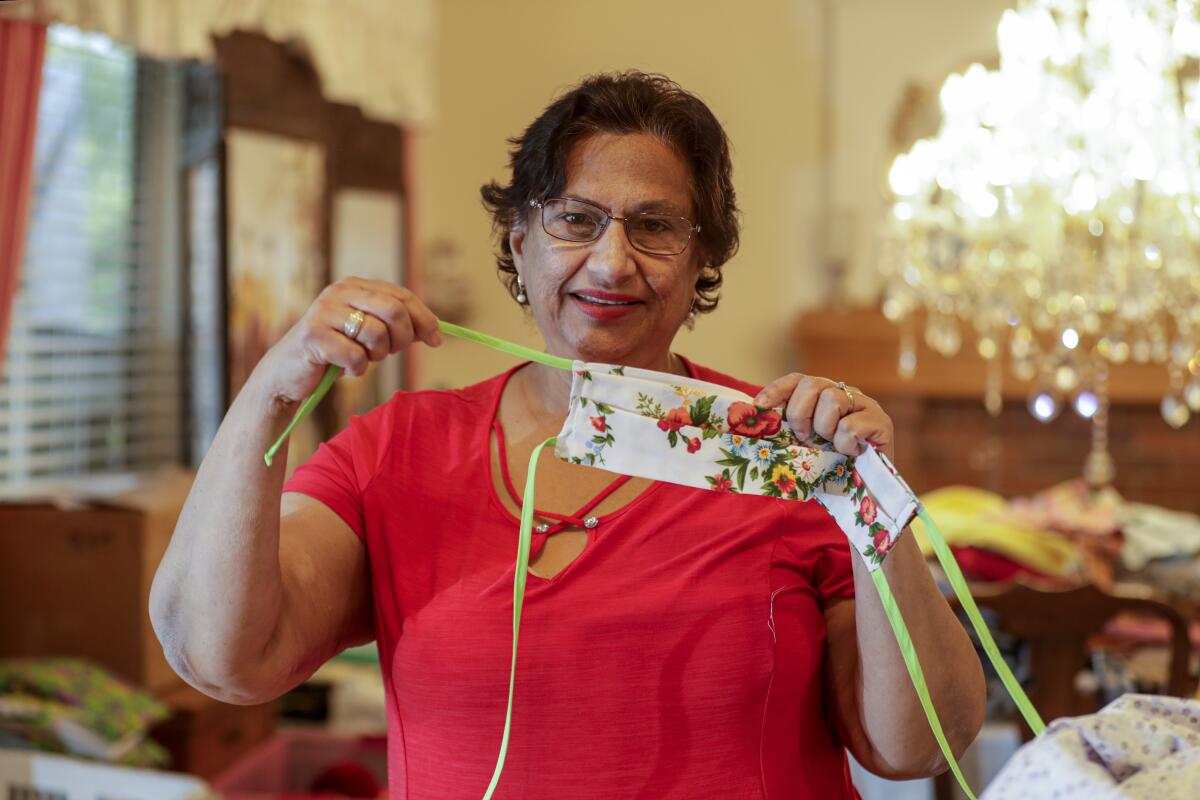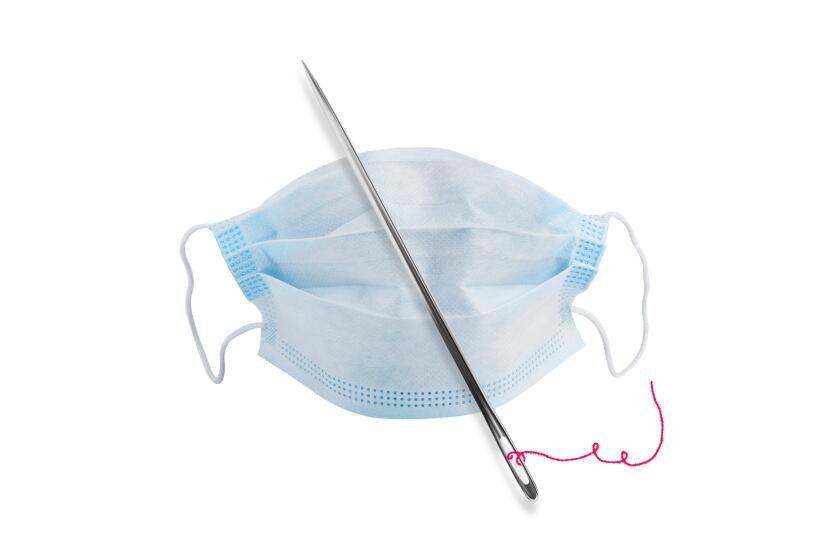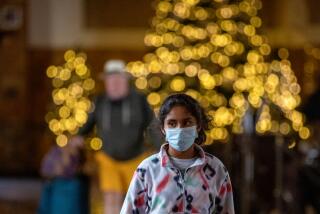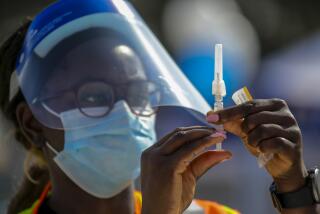How to keep your coronavirus face mask clean

- Share via
The Centers for Disease Control and Prevention and a growing number of California officials are now recommending that people wear face coverings or masks when out doing essential tasks such as grocery shopping and going to medical appointments.
But how do you keep your coverings clean?
The California Department of Public Health recommends frequently washing cloth face masks — ideally after each use, or at least daily. Place the coverings in a bag or bin until they can be washed with detergent and hot water and dried on a hot cycle (or at least washed with hot, soapy water).
If you have to wear the covering again before washing it, wash your hands immediately after putting it back on and avoid touching your face. And throw out any masks that no longer cover your nose and mouth, have stretched out or damaged straps, can’t stay on your face, or have holes or tears in the fabric.
Like the CDC, state officials have said people should not use medical or surgical masks, which are desperately needed by medical personnel. But they say cloth masks, if used correctly, could reduce coronavirus transmission among people with no symptoms and reinforce physical distancing regulations.
Experts say masks alone are not particularly effective in preventing infection. They don’t cover the eyes, for instance, and a bit of coughed saliva that sprays into the eye can cause an infection.
Wearing a mask but still touching your face with unwashed, virus-contaminated hands can also lead to infection. People often find masks uncomfortable and touch them to make adjustments.
DIY coronavirus mask instructions from crafters and doctors.
But even if they don’t provide full protection to the wearer, they can protect others nearby by removing contaminated droplets from the air released by asymptomatic people when breathing or talking.
Research published by Cambridge University Press in 2013 found that homemade cloth masks “significantly” reduced the amount of potentially infectious droplets expelled by the wearer.
Dr. Otto Yang, a UCLA expert in infectious diseases, said he thought universal mask-wearing had helped keep the virus under control in places such as Singapore and Taiwan.
“My personal opinion is that that’s probably been an important thing in other countries flattening their curve,” he said. “If you go to Taiwan or Singapore, everyone’s got a mask on all the time. Healthy or not. Sick or not.”
The California Department of Public Health has these guidelines for cloth masks:
- Face coverings can be made out of cloth, factory-made or hand-sewn, or improvised using bandannas, scarves, T-shirts, sweatshirts or towels.
- The material should cover both the nose and mouth.
- Ideally, face coverings should be washed after each use. Dirty masks should be placed in a dedicated laundry bag or bin.
- Use detergent and hot water when washing cloth masks, and dry them on a hot cycle.
- Be sure your mask is comfortable; you don’t want to have to keep adjusting the mask, because that means touching your face.
- Wash your hands, or use hand sanitizer, before and after touching your face or face coverings.
- If you must wear your cloth face covering again before washing it, wash your hands immediately after putting it back on and avoid touching your face.








